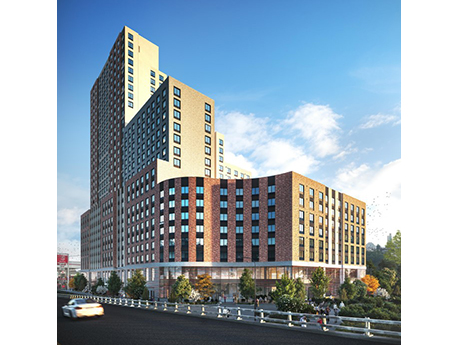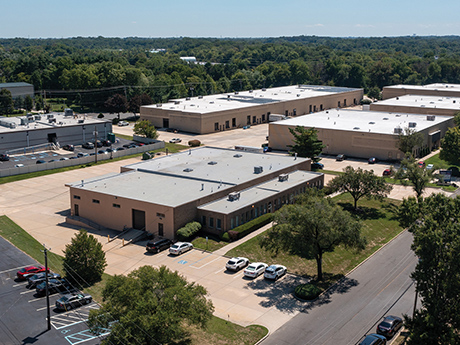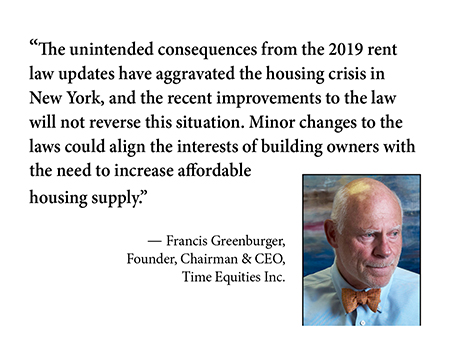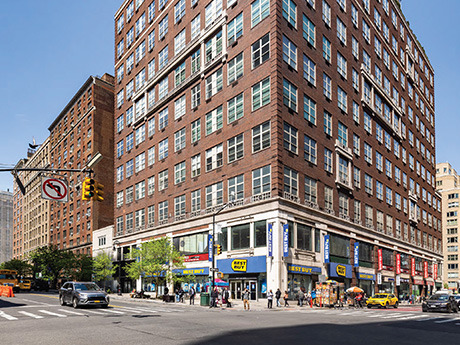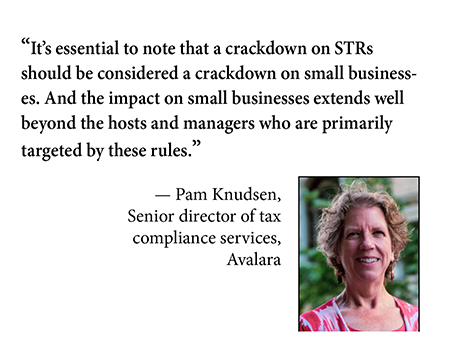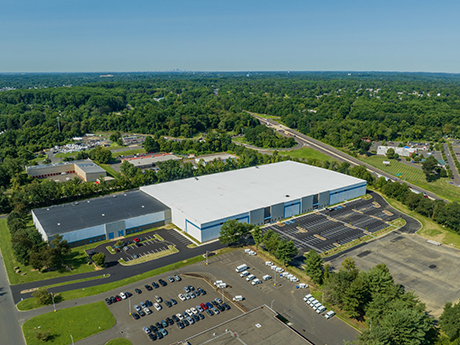By Hayden Spiess Though uncertainty — economic, political and otherwise — has been a theme of 2024, retail real estate markets throughout the Northeast have proven itself reliably strong. Even certain headwinds like high construction costs and minimal quality space to accommodate growth have ultimately helped fuel robust fundamentals throughout the region. Now, brokers, investors and developers in those markets are looking ahead with optimism and faith in persisting tailwinds. Quality Space Shortage Vacant retail space in Northeast markets has been hard to come by this year, and professionals in the region aren’t expecting that to change anytime soon. The equation, they say, is simple. While retailers’ appetite for expansion has remained healthy, new construction and deliveries have been very limited. “Almost nothing has been built in the past 10 years,” says Dan Zelson, principal with Charter Realty. “There’s really just very little new product.” Steve Gillman, partner at The Shopping Center Group (TSCG), notes that while some smaller, single-tenant buildings may still be coming on line, “nobody is building a big strip center with 100,000 square feet.” “There’s that imbalance of supply and demand: demand by the retailer and lack of supply of space,” adds Daniel Taub, senior …
Northeast Market Reports
By Jason Penighetti, Esq., and Carol Rizzo, Esq. of Forchelli Deegan Terrana Together with high rent and exorbitant property values, the real property taxes that fund necessary services in New York State make housing affordability a significant concern for low- and middle-income residents. To ensure a sufficient supply of affordable housing, the state must address the ad valorem levy, whereby taxes are derived from a property’s market value. This article examines the critical interplay between New York’s property tax policies and housing affordability. While some taxing mechanisms hinder the development and availability of affordable housing, adjustments and a few additions to those practices have the potential to promote the affordable sector. Exemptions, Incentives New York’s real property tax system supports a complex framework of entities that rely significantly upon property tax levies to generate revenue and fund their budgets. Property taxes, assessed at the local level, support essential services such as public schools, police departments, libraries, highways, fire districts, open space preservation, out-of-county college tuition and the New York State Metropolitan Transportation Authority, among others. To encourage the development of affordable housing and ease the burden that real property taxes can impose on developers and owners in the sector, New …
By Taylor Williams From an investment perspective, the New Jersey industrial market has plenty going for it: residential density throughout, proximity to major ports, high barriers to new development — but not even those fundamentals could shield the sector from macroeconomic variables that have caused deal volume and velocity to drop in recent years. Given the benefit of hindsight, the decline in industrial investment sales activity between late 2022 and early 2024 is not really surprising. Like most major industrial markets, those of both Northern and Southern New Jersey saw explosive demand for space in the early months of the pandemic as Americans sheltered in place and did their shopping online. Rents soared to record highs; cap rates compressed to historic lows. Institutional capital planted its flag in the Class A trophy space, and investors of all types duked it out for everything else. It was a hell of a party, but it couldn’t last. And when the lights began to come back on in the form of rising interest rates, sellers that didn’t have to sell generally chose not to. “Cap rates leveled off with the pricing discovery that went on when interest rates started rising,” explains Marc Isdaner, …
By Francis Greenburger, founder, chairman & CEO, Time Equities Inc. The recent changes to New York laws regarding rent-stabilized apartments, included in the 2024 budget legislation and signed into law by Gov. Kathy Hochul, are a step in the right direction. Unfortunately, the step is so small that the effect will be the same as standing still. Much of the initial commentary on 2024 housing law updates was about the so-called “good cause eviction” provisions, which have little to do with eviction but are instead a rebranding of rent control. In 2019, the legislature made significant changes to the rules governing rent-stabilized apartments. Most legislators who voted for this bill undoubtedly hoped to help New York State meet its affordable housing needs, but the opposite has happened. Thousands of low-cost, rent-stabilized apartments have since become vacant and remain so. Many of these apartments were occupied by tenants or families for 40 years or more. Apartments require capital investments periodically, and expectations for housing change dramatically over long periods. Renovating these units to meet modern standards requires significant investment, often mandated by housing code. Until the changes, building owners were willing to make these investments because they were permitted to increase …
By Taylor Williams Heath Ledger, squaring off against Batman as The Joker, observed, “so this is what happens when an unstoppable force meets an immoveable object.” The late great actor’s metaphor for the stalemate that ensues when entities of equal and opposing power collide could almost be used to describe the current state of the Boston retail market. For while the sector continues to see high levels of tenant demand and the locale retains an array of proven demand drivers, the lack of new supply means that a ceiling of sorts on the growth of the market as a whole is taking shape. And the factors that form the foundation of this ceiling are very unlikely to bend, much less break. Minimal gains in new inventory have long plagued the Boston retail market, and the current scenario is no exception. According to data from CoStar Group, the market added 518,000 square feet of new space in the 12-month period that ended June 30 but absorbed approximately 1 million square feet of space during that time. Vacancy thus remains extremely tight at 2.3 percent. In formulating its latest report on the Boston retail market, CoStar noted that Beantown retailers would “largely …
By Taylor Williams If the whole mall redevelopment thing doesn’t work out, you can always become a marriage counselor. Perhaps some additional training and education would be needed for such a career transition to actually take place. But mall and shopping center owners who undertake high-risk redevelopments undoubtedly have firsthand appreciation of the importance of providing clear and courteous communication to the many different groups they deal with, from municipal leaders to longstanding tenants to onsite contract workers. That’s not to say that poor communication will necessarily kill a mall redevelopment. The inability to secure zoning overlay districts, civic partnerships for infrastructural improvements or feasibly priced construction loans in 2024 — these are variables over which mall owners have limited control and can actually sink these projects in their infancy. And those factors only come into play once the development team has done its due diligence and determined what uses and levels of density the project will feature. “After you’ve considered the macro-level needs of the market and the asset itself, you enter a phase that we call ‘the minefield map,’” says Steve Plenge, CEO of Pacific Retail Capital Partners. “Reciprocal easement agreements [that regulate design or tenancy issues] by …
Sometimes smaller is better. “Sometimes” is of course the operative term in that controversial and wholly non-salacious statement. But in the context of industrial real estate, it’s becoming increasingly clear that at this point in the cycle, smaller buildings make more sense for developers to deliver as e-commerce and distribution users actively consolidate their footprints. “Most leases in New Jersey and Pennsylvania over the last 12 months were for less than 500,000 square feet, with 50,000 to 200,000 square feet being the ‘sweet spot,’ for leasing,” says Anthony Amadeo, executive vice president at New Jersey-based developer Woodmont Industrial Partners. “There is strong demand [for that product type], but other developers are now building it too, so we’re going to see some elevated competition in that space.” This activity is occurring across the country in varying degrees. But in markets like New Jersey and Eastern Pennsylvania, where sites that can support large-scale developments are extremely scarce and entitlement and permitting processes tend to be long and arduous, the trend is perhaps even more pronounced. Yet those longstanding characteristics of the Garden State and Lehigh Valley industrial markets are only partial reasons as to why new developments and deals are effectively downsizing. …
By Taylor Williams Across Manhattan’s major retail corridors and pockets, leasing agents, operators and owners are all gaining greater clarity on what levels of rent various submarkets can bear and, by extension, how much spaces are truly worth. After three years of disruptions of the public health and financial variety — each devastating in its own right — a reset of sorts is a major windfall for the country’s largest and arguably most dynamic retail market. Closing deals is challenging enough when all parties are on the same page and the economy is stable. When markets are going through tumultuous phases of discovery in which perceived valuations of spaces fluctuate wildly, negotiations tend to flame out even more quickly — if they even get going at all. “A year ago in Manhattan, you could have two adjacent stores, and one might have been asking for $120 per square foot while the other wanted $220 per square foot,” says Chase Welles, partner at TSCG, an Atlanta-based brokerage and consulting firm that is active in New York City. “There’s certainly more definition relative to last year, and the range of asking rents in each submarket has narrowed.” “The market has become more …
By Pam Knudsen, senior director of tax compliance services, Avalara While the dust has scarcely settled from a landmark ruling in New York City resulting in a massive crackdown on short-term rentals (STRs), the full extent of the fallout from the decision has yet to be fully grasped by many — and perhaps even by the city itself. Under the terms of Local Law 18, a resolution that passed earlier this year, hosts and owners of short-term rentals, including Airbnb, are now subject to tighter and stricter regulations. These include limits on numbers of guests, requirements to register with the city and obligations to more closely monitor guest behavior, among other regulations. The effective ban on short-term rentals will have considerable consequences on local economies, and more than anyone, it’s small lodging businesses that stand to be impacted by the resulting wave. But to fully understand the major impact this ban has on small businesses, we must first acknowledge that STRs should rightly be considered small businesses themselves. Much like any other small business, STRs are required by most communities to be licensed, registered and compliant with tax collection and remittance. Furthermore, the hosts and managers behind STRs operate in …
By Taylor Williams Architects and general contractors are shaking up the ways in which they design and construct industrial projects in response to financial pressures faced by their clients, an elevated emphasis on sustainability and shifts in how tenants utilize spaces. The nuts and bolts of designing and developing commercial properties are fickle by nature, as they are beholden to consumer preferences, which are in a perpetual state of flux. Yet the current shifts in industrial design and construction practices should not be viewed as indicators of the sector’s waning popularity among investors. “Despite a difficult rate environment that is causing challenges for all sectors of the economy, we have deep optimism about the near- and long-term future for the industrial market in New Jersey and Pennsylvania,” says David Greek, managing partner at regional firm Greek Real Estate Partners. “This region sits amid the most densely populated area in the nation and continues to grow. At the same time, the consumer shift to e-commerce is not nearly complete, creating a dramatic long-term need for logistics facilities to accommodate this historic change.” In other words, industrial is still hot. And the most visible and basic change occurring within the property type — …



